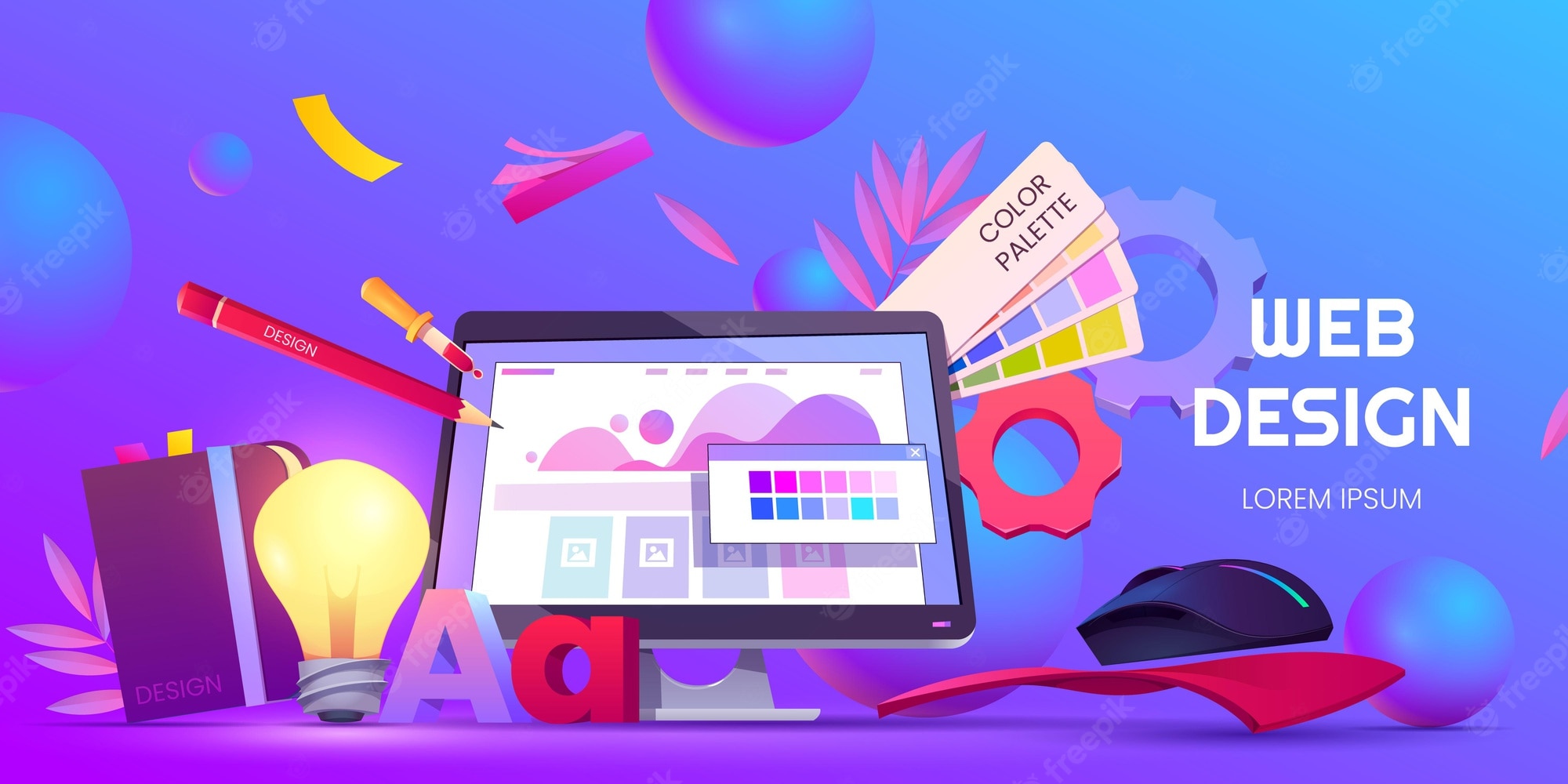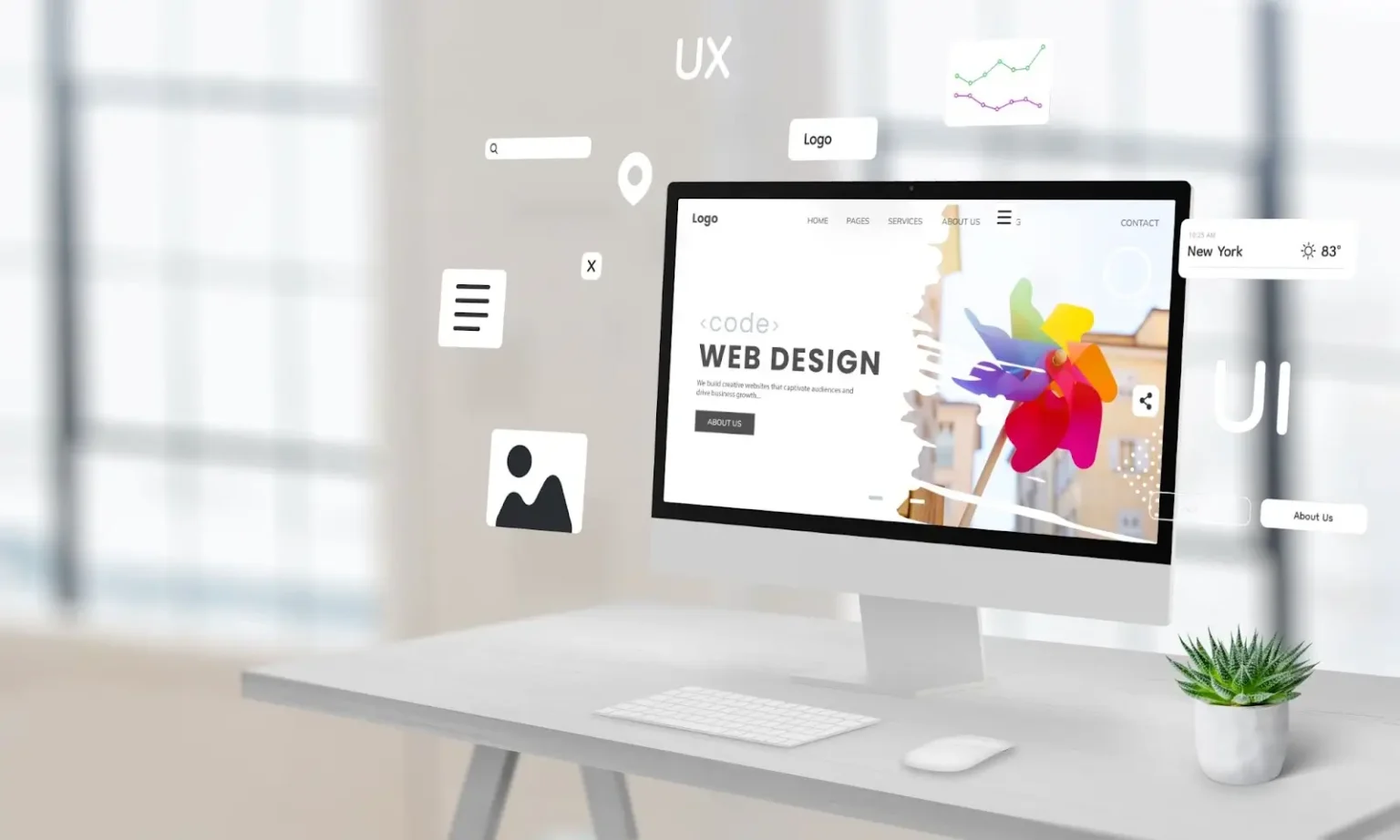Common Mistakes in Internet Advertising In South Africa and How to Avoid Them
The Crucial Elements of Effective Website Design: A Comprehensive Overview
Efficient website design encompasses numerous crucial components that considerably influence individual experience. It requires cautious consideration of variables such as mobile responsiveness, intuitive navigation, and aesthetic power structure. Each part plays a vital function in crafting a web site that not only brings in visitors however additionally retains them. Understanding these fundamental elements is important for services intending to improve their online visibility. What really distinguishes a successful website from its competitors?
Recognizing Customer Experience (UX) Design
Individual experience (UX) Design functions as the foundation of efficient web Design, focusing on exactly how customers connect with a site. It incorporates various aspects, consisting of functionality, ease of access, and total fulfillment. A successful UX Design begins with customer study, determining the target market's actions and demands. Wireframes and prototypes are after that established to picture the site's framework and circulation. Seo Company Klerksdorp. Testing with genuine individuals supplies useful insights, enabling developers to fine-tune the interface and improve navigation. Aesthetic Design aspects, such as typography and color schemes, boost the overall visual while sustaining capability. Ultimately, reliable UX Design assurances that users can easily achieve their goals, promoting interaction and loyalty. By prioritizing user experience, web sites can achieve higher conversion rates and a positive credibility
Significance of Mobile Responsiveness
As smart phones progressively control internet use, ensuring mobile responsiveness has come to be vital for reliable website design. Websites that are not enhanced for mobile can lead to a bad customer experience, leading to higher bounce rates and lost opportunities. A mobile-responsive Design allows content to adjust flawlessly to numerous display dimensions, guaranteeing that customers can access information quickly, no matter the gadget they use. In addition, online search engine focus on mobile-friendly web sites in their positions, making responsiveness an essential variable for visibility and web traffic. With an expanding number of customers accessing the web by means of mobile phones and tablets, organizations should spend in mobile responsiveness to improve individual engagement, boost brand assumption, and eventually drive conversions. Efficient website design must prioritize mobile responsiveness to remain competitive in today's electronic landscape.
Crafting Intuitive Navigating
Navigating works as the backbone of any kind of effective site, directing site visitors via web content effortlessly. An user-friendly navigation structure improves user experience by enabling individuals to discover info rapidly and efficiently. Clear labeling of food selection products is crucial; it must mirror the material properly, staying clear of jargon that may perplex customers. Furthermore, a logical hierarchy is crucial, enabling customers to determine relationships in between various sections. Consistency across pages helps strengthen assumptions, while breadcrumbs offer context and a feeling of instructions. Responsive navigation menus that adjust to various tools additionally boost ease of access. Inevitably, the goal is to create a smooth trip for visitors, guaranteeing they can check out the site without frustration, bring about a more involved and satisfied target market.
Making Use Of Aesthetic Power Structure
Visual hierarchy plays a vital function in internet Design by assisting individuals' focus and enhancing their experience. Reliable design strategies, in addition to thoughtful choices in shade and typography, can considerably influence how info is viewed and processed. Understanding these aspects is essential for creating visually enticing and practical web sites.
Significance of Visual Power Structure
Effective web Design depends upon the concept of visual power structure, which guides users via web content in a rational and user-friendly way. This concept is important for enhancing customer experience, as it helps prioritize info and guides attention to essential aspects. By establishing a clear power structure, web developers can ensure that customers easily identify essential messages, calls to action, and navigation options. A well-structured visual hierarchy minimizes cognitive lots, permitting users to refine info effectively. Furthermore, it cultivates involvement by producing an appealing layout that welcomes exploration. Eventually, recognizing the relevance of aesthetic hierarchy is important for any type of web designer aiming to produce user-friendly and effective internet sites that successfully connect their intended messages.

Strategies for Effective Layout
A well-organized design acts as the backbone of any type of effective website design, permitting individuals to easily browse through content. Effective methods consist of grid systems, which give a structured structure for aligning aspects, ensuring uniformity and equilibrium. Furthermore, utilizing whitespace strategically can improve concentrate on vital areas, decreasing visual clutter and directing customer attention. Prioritizing content with size and positioning further highlights crucial information, while contrasting elements can produce a clear visual pecking order. Applying responsive Design strategies assurances layouts adjust effortlessly throughout gadgets, keeping usability. Ultimately, incorporating user-friendly navigation aids, such as switches and food selections, enhances individual experience, making it less complicated for site visitors to locate pertinent details quickly. With each other, these techniques form the structure of an effective web format.
Color and Typography Choices
While color and typography selections may look like straightforward Design components, they play an essential role in developing aesthetic hierarchy on a website (Web Design South Africa). Shade can direct users' attention, differentiate areas, and communicate brand name identification. By purposefully utilizing contrasting colors, designers can highlight crucial calls to activity, ensuring they stand apart. Typography, on the various other hand, affects readability and individual involvement. An appropriate typeface can convey tone and personality, while differing font sizes and weights can develop a clear framework. For instance, larger, bolder headings attract focus, while smaller sized body text provides detailed info. Together, effective color and typography choices create a natural visual experience, leading individuals through the content effortlessly and improving total usability
Choosing the Right Color Design
How does one select the perfect color system for a website? Choosing the ideal shade plan is vital for enhancing customer experience and conveying the brand name's message. Designers need to begin by considering the target market and the feelings that various shades evoke. Blue typically represents depend on, while red can create urgency. It is vital to limit the combination to a couple of complementary shades to preserve visual harmony and avoid overwhelming customers. Utilizing devices like shade wheel applications can help in choosing shades that function well with each other. In addition, developers should guarantee that there is adequate contrast in between message and background colors for readability. Eventually, a well-thought-out color design can greatly influence a site's efficiency and user engagement.
Including Involving Content

Engaging content is important for catching and keeping the attention of web site visitors. It acts as a bridge in between the site's Design and the user's experience, cultivating much deeper connections. Reliable web content usually consists of a mix of insightful write-ups, enchanting visuals, and interactive elements that encourage customer involvement. By making use of storytelling methods, internet sites can stimulate feelings, making the material a lot more remarkable and relatable. Additionally, incorporating user-generated material, such as testimonials or reviews, improves integrity and develops count on with the audience. Clear calls-to-action guide users towards desired outcomes, ensuring they continue to be engaged. In general, a calculated method to material growth not only enhances individual experience however additionally drives conversions, making it an important element of effective website design.
Enhancing for Speed and Performance
Optimizing for rate and efficiency is essential for improving user experience on a site. Methods such as photo compression, minifying Home Page CSS and JavaScript, and leveraging web browser caching can substantially minimize filling times - Internet Advertising In South Africa. These strategies not just improve performance but also add to much better online search engine rankings
Image Compression Techniques

Minifying CSS and JavaScript
Many internet designers concentrate on picture optimization, minifying CSS and JavaScript is just as vital for improving web site speed and performance. Minification involves eliminating unnecessary characters from code, such as whitespace, remarks, and format, without influencing its performance. This procedure leads to smaller data dimensions, which brings about faster packing times and improved customer experience. By lowering the quantity of data transferred between the customer and the web server, minification assists decrease data transfer usage and boosts general website effectiveness. Furthermore, internet search engine prefer faster internet sites, which can enhance search rankings. Executing devices and automated procedures for minifying these manuscripts can improve internet advancement and upkeep, making certain that performance remains a top priority throughout the lifecycle of a web site.
Leveraging Internet Browser Caching
Leveraging internet browser caching considerably boosts web site rate and performance by keeping frequently accessed resources in your area on a customer's device. This method lessens the requirement for repeated requests to the web server, substantially reducing packing times for returning visitors. By making use of HTTP headers, internet designers can specify caching regulations for various resources, such as manuscripts, stylesheets, and pictures. Correctly applied caching methods enable customers to experience faster web page loads, leading to improved user complete satisfaction and engagement. Additionally, search engines favor sites with optimized performance, potentially increasing search websites positions. Routinely taking care of and assessing cache setups guarantees that users obtain updated web content while still benefiting from the performance of cached resources. Finally, reliable browser caching is an essential element of maximizing internet efficiency.
Often Asked Questions
How Do I Pick the Right Website Design Tools?

Selecting the ideal web Design devices involves assessing job requirements, recognizing customer needs, and examining various software program functions. Compatibility, ease of use, and area assistance are also essential elements to consider for efficient Design results.
What Are Common Internet Design Mistakes to Avoid?
Common website design errors to stay clear of consist of messy designs, poor navigation, insufficient mobile responsiveness, slow-moving loading times, and overlooking customer experience. Effective designs focus on simplicity, ease of access, and functionality to engage users and improve fulfillment.
Just How Can I Measure My Website's Success?
To determine an internet site's success, one might evaluate metrics such as traffic, conversion rates, customer involvement, and bounce prices. Utilizing devices like Google Analytics can give important understandings for ongoing optimization and improvement techniques.
What Role Does Search Engine Optimization Play in Website Design?
SEO considerably influences website design by ensuring that internet sites are structured for internet search engine exposure. This consists of optimizing site speed, mobile responsiveness, and content quality, ultimately boosting individual experience and driving natural web traffic.
Exactly how Commonly Should I Update My Web Site Design?
The frequency of site Design updates depends upon sector fads, user feedback, and technological improvements. Commonly, a refresh every 2-3 years is suggested, ensuring the site stays appropriate and aligned with present standards and user expectations.
User experience (UX) Design serves as the foundation of efficient web Design, focusing on exactly how customers connect with a web site. With an expanding number of customers accessing the net via tablet computers and mobile phones, organizations should invest in mobile responsiveness to enhance user involvement, enhance brand name understanding, and ultimately drive conversions. An user-friendly navigating framework enhances user experience by permitting users to discover information swiftly and efficiently. Correctly applied caching strategies enable customers to experience faster page lots, resulting in boosted user complete satisfaction and engagement. The frequency of website Design updates depends on market patterns, individual responses, and technological improvements.